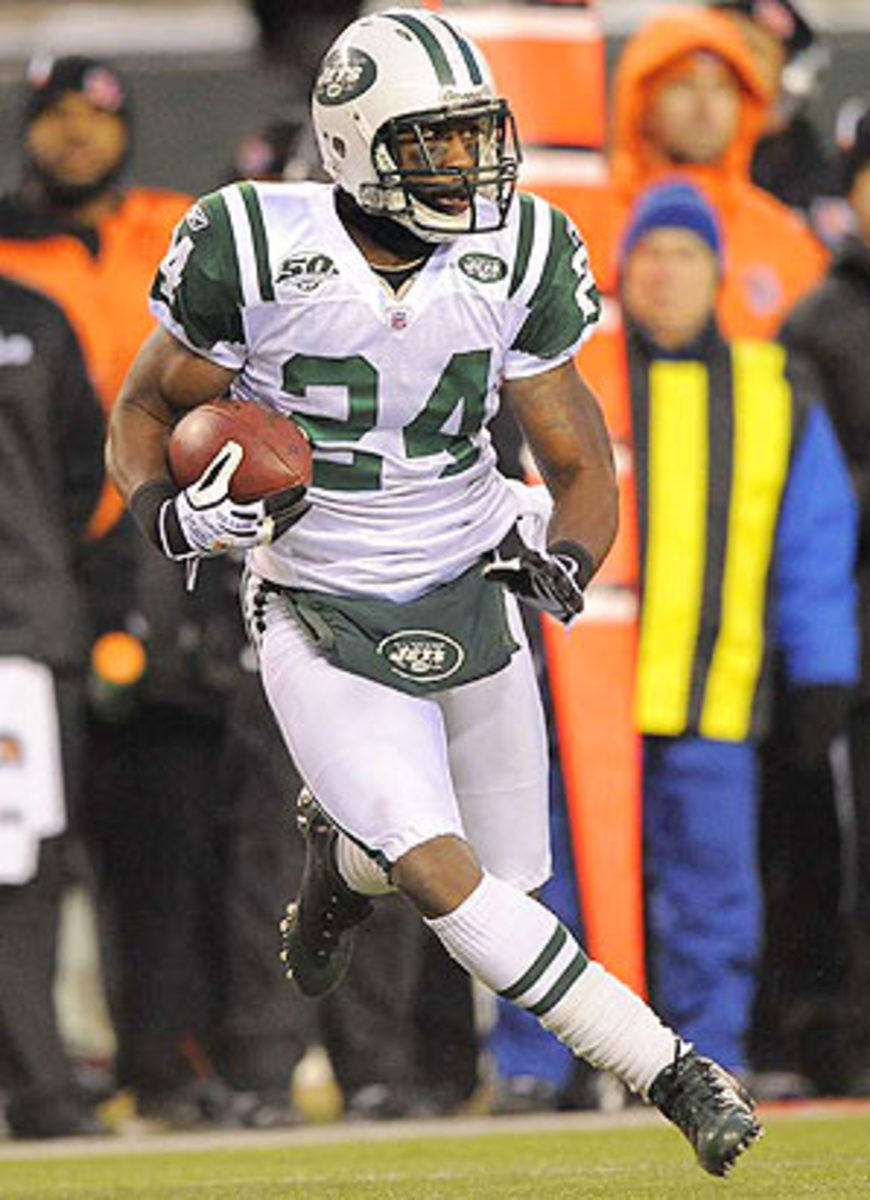Picked apart: Interception ladder shows impact in NFL playoff history
The postgame reports said the Jets sealed their upset win over the Chargers last week when Kerry Rhodes recovered an onside kick, allowing his team to run the final two minutes off the clock.
But the Cold, Hard Football Facts say that the game ended -- statistically, anyway -- when Philip Rivers threw his second pick of the game, late in the third quarter. Darrelle Revis picked off the first earlier in the period. Jim Leonhard hauled in the second, on San Diego's very next drive.
The game was effectively over, at least according to one of the most interesting gauges of success in all of sports: the Cold, Hard Football Facts Interception Ladder.
We've seen the impact of picks throughout the 2009 postseason: the team that's thrown fewer INTs is 8-0 in the playoffs. We've also seen the impact of picks throughout history, thanks to the interception ladder.
This indicator measures the impact of each and every interception thrown in the playoffs since the AFL-NFL merger of 1970. It tells us that no play in football, perhaps no play in all of sports, is more important than picks. Each interception thrown by a team decreases its chances of winning by, give or take, an astonishing 20 percentage points.
In fact, we're so amazed by the Interception Ladder that when the Cold, Hard Football Facts watch games, we tick off in our heads the decreasing likelihood of a team's chances to win with each and every INT thrown by its quarterback.
It's the second pick that's absolutely murderous to a team's chances, much like the one that Rivers threw to Leonhard last Sunday. Teams almost always win when they throw zero picks. They still have a likelihood of winning when they throw one pick. But the second pick is devastating. Throw it, and your chances of winning are extremely slim.
Here's the CHFF Interception Ladder, a look at the record of teams in the playoffs (since 1970) based upon the number of interceptions they threw (through the 2009 divisional playoffs):
• 0 INT -- 191-51 (.789)• 1 INT -- 144-119 (.548)• 2 INT -- 54-119 (.312)• 3 INT -- 17-78 (.179)• 4+ INT -- 1-41 (.024)
The Chargers provided a perfect case study in the importance of each and every pick: the first killed a critical second-half drive as they were clinging to a 7-3 lead over the gritty Jets. But they still had a good shot to win. The second INT not only killed their very next drive, but also reduced their chances of victory while handing the Jets a short field at the San Diego 16. Four plays later, Mark Sanchez (who threw just one pick Sunday) tossed a pass to Dustin Keller for a two-yard TD and a 10-7 advantage. The Jets never looked back.
We all know that the team that wins the turnover battle usually wins the game. But INTs are particularly important. Fumbles, for example, are often fluky plays that could happen any time and to any player. But interceptions are more indicative of the ebb and flow of a game: they're a function of superior or inferior schemes, talent on defense, and talent at the most important position on the field, quarterback.
Interceptions, in other words, tell us quite a bit about each team and about each team's chances of success. In fact, we can't imagine a single play in sports that makes such a profound impact on a team's ability to win a game.
Even the lone four-INT victory on the Interception Ladder proves the importance of picks: Back in 1981, Buffalo's Joe Ferguson became the first and only quarterback to win a playoff game after throwing four or more INTs in a game. But he had a little help that day: his opponent, Jets quarterback Richard Todd, also threw four INTs. The Bills won, 31-27.
Believe it or not, interceptions are even more important than TD passes. Teams that have thrown more TDs passes in the 2009 playoffs, for example, are 4-1 (three games ended with an equal number of TD passes), while teams with fewer picks are 8-0.
In fact, take a look at the record of teams that throw more touchdown passes and compare that with the record of teams that throw fewer interceptions (playoff games since 1970, through 2009 divisional playoffs):
• Teams that toss more touchdowns than their opponents are 216-65 (.769)• Teams that toss fewer interceptions than their opponents are 271-56 (.829)
Consider the case of New England's Tom Brady, who out-gunned Baltimore's Joe Flacco in the wild-card round, with two TD passes to none. But Flacco tossed just one pick. Brady was intercepted three times. Given those numbers, it's no surprise that the Ravens romped, 33-14.
Three picks were an unusually high number for Brady, one of the most mistake-free passers in football history. In fact, Brady entered that game with a postseason interception rate of just 2.02 percent -- it was the second lowest INT rate in NFL history. No surprise then that Brady entered the 2009 playoffs with a 14-3 record in postseason play, also the second best mark in NFL history.
One player holds the record in both categories: Green Bay Hall of Famer Bart Starr is the least intercepted passer in playoff history (1.41 percent). He's also the winningest quarterback in postseason history (9-1).






